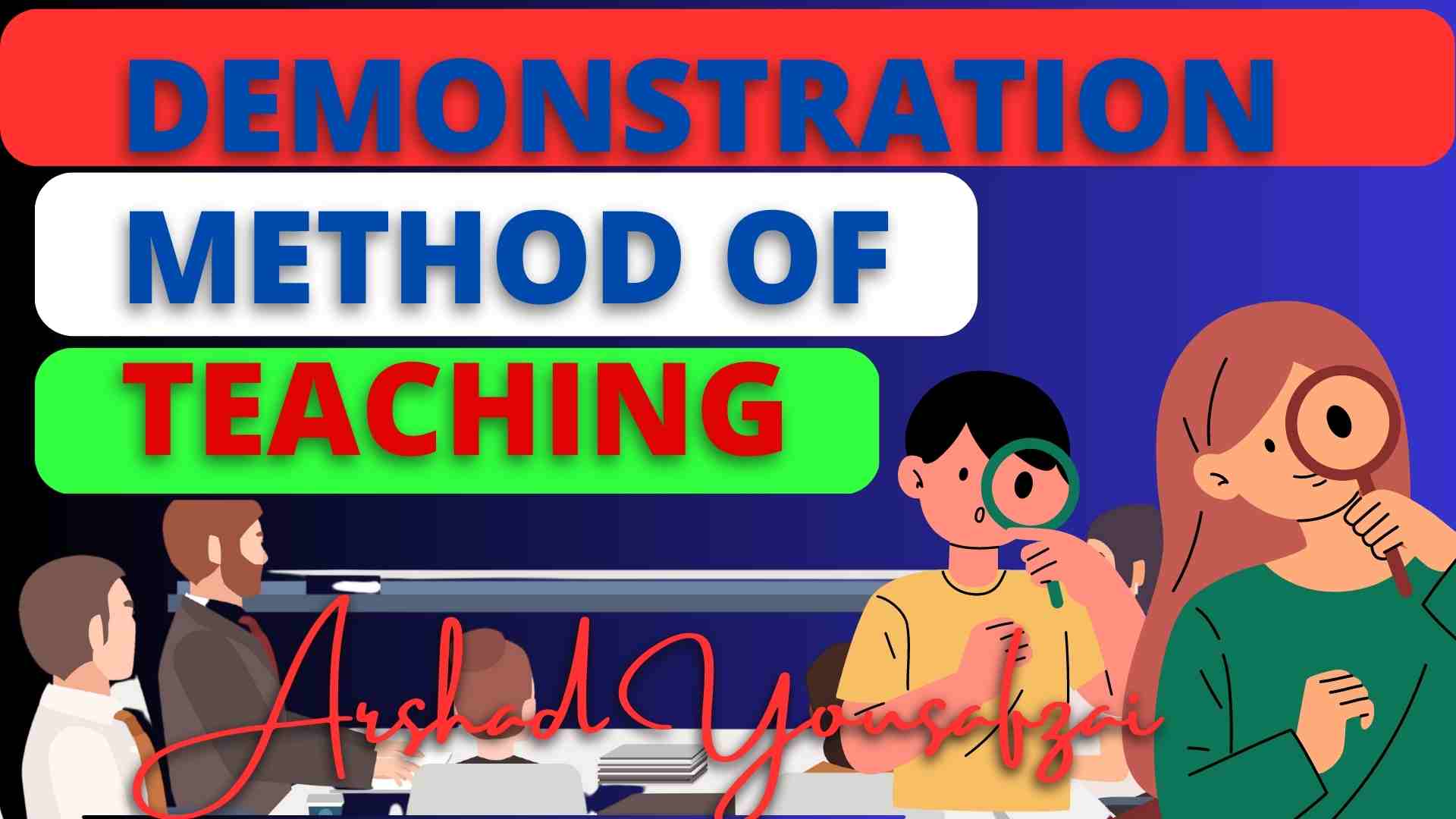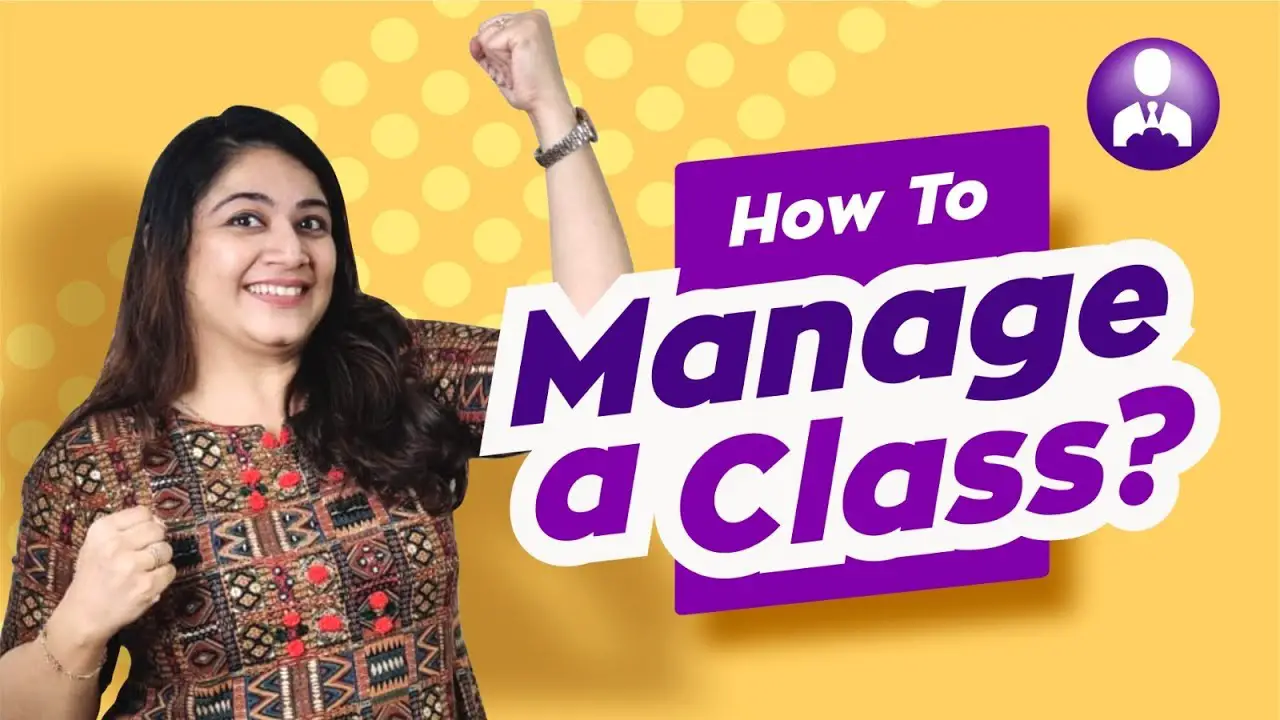In the demonstration method, a teacher demonstrates and shows how to perform a task, such as a science experiment or a math problem. Mostly teachers in Biology, Nursing, and Medical use the demonstration method.
A teacher may use different teaching methods based on the needs and objectives of their students. Lectures, dialogues, demonstrations, cooperative learning, problem-solving, and experiential learning are common teaching approaches. Each method has advantages and disadvantages and can be effective based on the desired learning objectives. Educators must know about the advantages and disadvantages of each method and select the best way that fully meets the needs of their students.
These are only a few examples of teaching methods. The most effective teaching method will depend on the topic, the student’s age and abilities, and the lesson’s objectives. But we will restrict ourselves to the case, which is the Demonstration method.
What is Demonstration Method
The word Demo is derived from the Latin demonstrationem, from demonstrare, which means show or explain (de- means concerning + monstrare means to reveal. So it is a teaching method in which the performance is noted, and the observers are watching it. It is elaborated on below.
The demonstration method in teaching involves giving a demo or performing a specific activity to help students understand theories and concepts. This method requires clear language and the ability to ask questions and involves students’ active participation and props, such as charts.
The technique has six steps:
- Planning
- Preparation
- Introduction
- Presentation
- Demonstration
- Evaluation
The method benefits students by improving their understanding, engaging them, and leading to permanent learning. The process is suitable for students of all ages and can be used in higher classes with the help of students.
The demonstration teaching method may be effective in certain situations but is only suitable for some students and subjects. For example, in matters that require critical thinking and problem solving, such as math and science, more than simply demonstrating a concept may be necessary for students to grasp the material fully. Some students may need help with active participation and feel uncomfortable asking questions in front of their peers. Preparing to perform the demonstration method can take a lot of time and can only be done in some classrooms. It’s important for teachers to think about their students’ different needs and ways of learning and to use other teaching methods to ensure everyone can understand and remember the material.
Definition and Explanation of Demonstration Method
The demonstration method is an effective way to teach and instruct because it makes it easier for students to understand complicated ideas.
A teacher shows and performs step-by- how an activity, such as a science experiment or solving a mathematical problem. As the teacher demonstrates the procedure in front of the students, they can see precisely how it is carried out and better comprehend the concept.
This engaging and interactive method or technique for teaching lets students learn by watching and taking part. Students can develop their problem-solving skills, critical thinking abilities, and creativity through demonstrations. Students can see how various components interact, enabling them to connect and better understand the subject matter.
In this teaching method, students can see the practical application of their learning through demonstration. This method is especially important in science and mathematics, where students may need help grasping concepts without seeing them in practice. Through demonstrations, students can see how these ideas work in the real world, which makes them more real and easier to understand.
Another advantage of the demonstration method is its adaptability to various learning styles. Some students are visual learners who must observe an activity to comprehend it. Others may be auditory learners who must listen to teachers for better learning. The demonstration method works for both types of students, making it a good way to teach many students.
The requirements and necessities or conditions for the demonstration method are that it needs better planning and experience. The teacher or instructor must have a full command or grasp of the subject matter and be able to break it down into manageable steps for better understanding. The demonstration should be in simple words, concise, and simple to follow. Furthermore, the teacher should be available and well-prepared to answer questions and offer additional explanations.
Comparison with Other Teaching Methods
Educators may use many different teaching methods to help students. However, each method has strengths and weaknesses; the demonstration method is a particularly effective teaching method compared to other methods.
Like lectures, discussions, and cooperative learning, the demonstration method offers a different and more engaging situation for students to learn. By showing students how to do something, the demonstration method provides a tangible example of how the material can be applied in the real world. This is particularly important in science and math, where concepts can be challenging to understand without seeing them in action.
The lecture method may need to be more fruitful due to students’ passiveness. Also, the boring factor due to the monotonous tone of the teacher makes it difficult for students to engage with the material. While discussions and cooperative learning can effectively encourage critical thinking and collaboration, they may provide a different practical application than the demonstration method.
Another benefit of the demonstration method is that it can be used for different learning styles. Visual learners can benefit from seeing the process in action, and auditory learners can benefit from hearing the teacher explain each step. The demonstration method can accommodate both types of learners, making it an effective teaching tool for many students.
As no teaching method is 100% accurate, the demonstration method also has challenges. Preparing and executing a demonstration can be time-consuming and may only be appropriate for some topics. Other teaching methods, like problem-based or experiential learning, may be more effective.
The best teaching method will depend on various factors, including the subject matter, the student’s age and abilities, and the lesson’s goals. For a teacher, it is important to be familiar with a range of teaching methods and to choose the most appropriate one for each situation. However, the demonstration method should be considered a powerful and engaging way for students to learn and succeed.
Principles for Demonstration Method of Teaching
The Demonstration method is a very effective way to help students learn complex concepts. With this method, a teacher can create an engaging and interactive learning environment where students can actively participate in their education. The demonstration method may be a better tool for teachers to help students develop a deep understanding of the material and prepare them for success in the real world. However, a few fundamental principles must be followed for the demonstration method to be successful.
- The demonstrating instructions must be clear and concise. The teacher must deeply understand the content and resources and break them down into manageable steps that can be quickly followed. The demonstration should be well-planned and executed, with clear instructions and explanations.
- The second one is that students must actively participate, have a clear chance of asking questions, and watch the performance when the teacher demonstrates the process; students should be encouraged to ask questions, make observations, and provide feedback. This helps create an interactive and engaging learning environment where students can actively participate in their learning.
- Opportunity and reinforcement are also important, so a teacher must provide opportunities for practice and support. After the demonstration, students should be allowed to practice their learning independently. This helps to reinforce the concepts and ensures that students have a deep understanding of the material.
- Students have different learning styles, and the demonstration method focuses on the student’s Individual needs. The demonstration should be focussed on individual differences. Visual learners may benefit from seeing the process in action, while auditory learners may benefit from hearing the teacher explain each step.
- In conclusion, no method is perfect, so this method may be used with other ways to make an eclectic approach most suitable for a specific situation. While the demonstration method is an effective teaching tool, it is appropriate for some topics or subjects. By combining the demonstration method with different teaching methods like lectures, discussions, and problem-based learning, teachers can create a well-rounded and effective learning experience for their students.
Characteristics and Objectives of the Demonstration Method
This method is decisive in helping students learn complex concepts hands-on and engagingly. Its unique features and goals make it a useful tool for teachers who want to create a dynamic, interactive learning environment that helps students get ready for practical life. With these principles, teachers can unlock the full potential of the demonstration method and help students achieve their goals.
I love to teach and help students reach their fullest potential. The demonstration method is a powerful way to teach, with its own goals and ways of working to help students learn complex ideas through real-life experience.
The demonstration method’s most important or key characteristic is that it is a visual and experiential form of learning. Teachers can create a more substantial and meaningful learning experience by showing the students how to do something rather than just telling them to do it themselves. This helps students better understand and apply the material in real-world situations.
Another characteristic of the demonstration method is that it is interactive and participatory. Students are encouraged to ask questions, watch, and give feedback, making the classroom lively and interesting. The demonstration method aims to help students understand a certain idea or skill clearly and practically. Students get involved in their learning and learn how to think critically.
The demonstration method aims to help students understand a certain idea or skill clearly and practically. When the parts are broken down into smaller pieces, teachers and students can understand the material better. This prepares students for success in the real world, where they will need to be able to apply their knowledge and skills practically.
Another objective of the demonstration method is to accommodate different learning styles. Visual learners may benefit from seeing the process in action, while auditory learners may benefit from hearing the teacher explain each step. By catering to the individual needs of each student, the demonstration method can be even more effective.
Learning Theories That Support the Demonstration Method
Several learning theories support the demonstration method, which can be changed to fit several educational philosophies. Whether you are an educator, pragmaticist, essentialist, existentialist, or constructivist, the demonstration method can be a powerful tool for helping students learn and grow.
Some philosophies and psychological theories are listed below, along with how these are aligned with the demonstration method.
Behaviourism focuses on how reinforcement and response help in students’ learning, and the demonstration method is a clear and concrete way to practice and reinforce ideas. In this case, the stimulus comes from the desire to watch, look at, and learn from the matter.
On the other hand, constructivism emphasizes the importance of hands-on, experiential learning, which is exactly what the demonstration method provides. Social learning theory stresses the importance of watching and imitating when learning, which is at the heart of the demonstration method.
To know what different educational philosophies say about the demonstration method, each has its unique point of view.
As idealists believe in ideas and aesthetics, they might see the demonstration method as a way to show how beautiful and elegant the subject is and how important inspiration and creativity are in learning.
Realists believe in the real world and real experiences and don’t believe in ideas and abstract ideas. Because of this, they may see the demonstration method as a way to learn skills and knowledge that can be used in the real world. They may know the method as one that teaches students to think critically and logically about the world around them.
Pragmatists may see the demonstration method as promoting problem-solving and critical thinking skills. They may know how to prepare students for the challenges they will face in their future careers and the real world.
Essentialists might think the demonstration method teaches the skills and knowledge needed for success. They may stress how important it is to learn basic ideas and skills, which can be helped by the demonstration method.
Existentialists may see the demonstration method as encouraging individual growth and self-expression. They might talk about how important it is to be creative and try new things, which the demonstration method can help with.
Lastly, reconstructionists might think that the demonstration method challenges traditional thinking and helps bring about social change. They may know the method as a way to empower students to question established norms and think critically about the world around them.
Lesson Planning in Demonstration Method
For lesson planning in the demonstration method, a teacher has to be careful about the learning goals, materials and equipment, pace, and participation. If proper attention is given, teachers can help students reach their full potential by giving them dynamic and interactive experiences. With the demonstration method, the teacher’s approach can tackle the technique’s full potential and help students succeed in the classroom and the real world.
For lesson planning, the first step is to identify the learning objectives and outcomes for the lesson.
What specific skills or concepts are expected of the students?
How will you measure their progress and understanding?
By setting SMART goals, teachers can ensure the lesson stays on track and helps the students learn. (Specific Measurable Attainable, Realistic, and Time-bounded)
In the second step, a teacher must consider the resources required for the demonstration. Such as the question of whether it needs any specialized equipment or supplies. Does it have everything needed to conduct the demonstration safely and effectively? Ensuring it has all the necessary materials in advance can help avoid disruptions and keep the lesson on track.
Teachers must ensure they move through the demonstration at a pace appropriate for their student’s learning needs. This may mean pausing to answer questions or repeating steps as needed.
It is also important to consider the level of interaction and participation to encourage during the demonstration. Will students actively participate in the rally, or will they observe? Incorporating opportunities for participation and interaction can make the lesson more engaging and dynamic.
Lastly, think about how you will test what students have learned and give them feedback. Will there be a formal assessment, such as a quiz or test? Or will you provide feedback informally through observation and discussion? Planning your lessons with these things in mind can give your students a more effective and interesting way to learn.
Demonstration Method Advantages
The demonstration method has several benefits for teachers who want to help their students learn well. The demonstration method is an effective way to teach because it gets students interested, helps them remember, encourages critical thinking, provides visual learning, gets them involved, and saves time. The demonstration method is a way of learning that gets students involved. It allows students to see the practical application of their education, making it more meaningful and interesting.
- Enhances Retention: Students are more likely to remember and retain the information after seeing a demonstration. This allows them to connect theoretical concepts to real-world applications, making the learning experience more memorable.
- Encourages Critical Thinking: The demonstration method encourages students to think critically and ask questions. By seeing the demonstration, students can ask questions and get clarification on any confusing concepts.
- Provides Visual Learning: For some students, visual learning is the most effective way of learning. The demonstration method visually represents the concepts being taught, making it easier for students to understand and remember.
- Encourages Participation: The demonstration method allows for student participation and interaction. This helps to create a more engaging learning experience, as students are actively involved in the learning process.
- Saves Time: Using the demonstration method, teachers can save time explaining complex concepts. Instead, they can demonstrate the idea, making learning more efficient.
Types of Demonstration Method
There are several types of demonstration methods, including:
- Personal Demonstration: In this type of demonstration, the teacher physically performs the task or skill taught, allowing students to observe and learn.
- Model Demonstration: In this type of demonstration, the teacher uses a model or representation of the task or skill being taught, allowing students to observe and learn.
- Group Demonstration: In this type of demonstration, students work in groups to perform the job or skill taught, allowing for collaboration and peer learning.
- Interactive Demonstration: In this type of demonstration, the teacher engages students in the learning process by asking questions and encouraging participation, making the learning experience more engaging and dynamic.
- Online Demonstration: In this type of demonstration, the teacher uses digital resources such as videos or simulations to demonstrate the task or skill, allowing for remote or distance learning.
- Simulated Demonstration: In this type of demonstration, the teacher uses a simulated environment or situation to demonstrate the task or skill being taught, allowing students to practice and apply their learning in a safe and controlled environment.
When, Why, and How to Use the Demonstration Method?
When to Use the Demonstration Method?
The demonstration method is best used when teaching complex or technical skills, such as laboratory experiments or woodworking. It can also help guide abstract ideas that students need help understanding through theory alone.
Why use the demonstration method?
The demonstration method is an active learning approach that engages students in learning. It allows students to see the practical application of their education, making it more meaningful and interesting. Students are more likely to remember and understand what they learn if they see it demonstrated. It also encourages critical thinking and participation.
How to Use the Demonstration Method?
To effectively use the demonstration method, the teacher should plan and prepare the demonstration in advance, ensuring it is relevant, clear, and engaging. The teacher should also encourage students to ask questions and participate in the rally, making it an interactive experience. After the demo, the teacher should review and summarize the main points, allowing students to think about their learning.








[…] world by studying it in the real world and that this knowledge is not based on how we feel about it. The scientific method is rooted in the realist view of the world. It is based on direct observation and experimentation. […]
[…] a balanced and effective learning experience. For example, instructors can start with a lecture or demonstration to provide foundational knowledge and then transition into a discussion to deepen understanding and […]
[…] are several types of assessment methods for learning. Traditional methods include written examinations, quizzes, and essays, which assess […]
[…] supreme duty is to ensure students understand the presented material. This means using different teaching methods, like visual aids and hands-on activities, to help students understand complex ideas. Teachers can […]
[…] philosophy in education is to identify the aim of education, the substance of the curriculum, the methods of teaching, and the evaluation of learning […]
[…] common teaching methods include lecture, discussion, project-based, and inquiry-based […]
My partner and I stumbled over here by a different web address and thought I might check
things out. I like what I see so now i am following you.
Look forward to exploring your web page for a second time.
[…] analysis of numerical data to understand phenomena and establish patterns or relationships. This type of research often employs statistical methods and is commonly used in fields such as psychology, sociology, and […]
[…] achieves a synthesis of all the information that he gathers in the process of education. One of the methods of achieving this is purposeful teaching. All these qualities can be seen in the Project method invented by Kilpatrick, Dewey’s […]
[…] According to Merriam-Webster: Education is the process of being educated or educating, or the knowledge, skills, and development gained from practice or study. It can also refer to the field of study that deals with the problems and methods of teaching. […]
Can you tell us more about this? I’d care to find out some
additional information. I saw similar here: Ecommerce
[…] Psychology has emphasized upon separate curriculum for retarded children. For a proper and correct learning-teaching process, a separate teaching method is very […]
[…] skills while fostering a lifelong love of learning. As educators continue to explore innovative teaching methods, project-based learning stands out as a transformative approach that prepares students for success […]